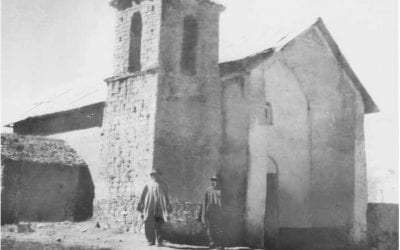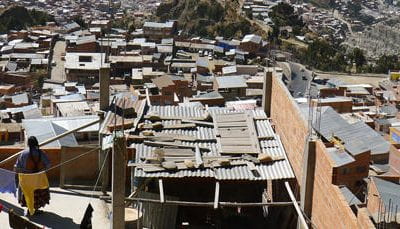Bolivian Women
Making The Revolution
When Evo Morales was first elected to office, he was asked if he would make a ministry for gender. He responded that he would not and that instead he would make women themselves ministers. Various women’s organizations criticized his decision at the time yet his play on words proved to be true: in 2011, half of the twenty ministers in his cabinet are women, an unprecedented development for Bolivia.
Evo Morales has acknowledged the significance of gender parity, calling it “a tribute to my mother, my sister, and my daughter.” There are a lot of “firsts” for women in the Morales government: Carmen Trujillo is the first Minister of Labor, Maria Cecilia Chacón recently became Bolivia’s first Defense Minister, Ana Maria Romero was elected the first female President of the Senate, Silvia Lazarte was the first woman to preside over a Constitutional Assembly, Leonilda Zurita became the first female leader of the Movimiento al Socialismo (MAS) party in Cochabamba, and the list goes on. Furthermore, thanks to the new Bolivian constitution, the work of the Bolivian Women’s Coordinating Committee, and Evo Morales’ commitment to gender parity various campaign strategies emerged—like Las Mujeres Listas para las Listas—that had a positive impact on women in the 2010 elections. Today the Plurinational Legislative Assembly has a total of 30% female representation, including 33 female deputies (28%) and 17 senators (47%). In addition, 43% of all Bolivian council members are women.
While greater female political representation in formal politics is a trend in Latin America—the region currently boasts three female presidents, quite a few female defense ministers, and a significant increase of female representation in legislatures—the Morales government ranks among the most progressive in Latin America in female political representation. Perhaps the biggest achievement, one that is unparalleled in any other part of Latin America, is the political visibility of indigenous women. Although the Morales government has been criticized for forcing indigenous women to address ethnic discrimination over gender concerns, early indicators demonstrate that women in the Morales government are exerting their influence in both areas.
Indigenous women were at Morales’ side since he was a union leader in the Chapare region. They organized demonstrations, marches, road blockades, sit-ins, and mobilized entire communities in support of his candidacy. Once Evo took office, the Bartolinas became his most ardent defenders as he began the transformation of the Bolivian political landscape. To his credit, Evo Morales had the vision to reward women’s contributions with political power, perhaps guided by the Andean principle of Chacha-Warmi—gender complementarity. Indeed, unlike other opposition movements in Latin America that relegated woman to the background once they came into power, Morales made sure that women occupied high ranking political roles from the very beginning, although they did not immediately enjoy as high a level of decision-making as they do today.
Leonilda Zurita, one of Morales’ closest advisors, was once believed to be one of the most powerful women in Bolivia. Acknowledging the important strides that women have made in the last five years, she said, “We still have men who don’t want women to participate in Bolivia, but we have fought against that and here we are with more power than ever.” (Robert Clarkson, “Bolivian Constitution Reinvented to Champion Gender Equality,” The Solicitor. February 11, 2010). Zurita and Silvia Lazarte, supporting Morales since his Chapare days, are highly respected among Bolivia’s indigenous women. In January 2010, the powerful indigenous women’s organization, Bartolina Sisa National Federation of Bolivian Peasant Women (FNMCB-BS or Bartolinas) proposed them (along with that of former Senator Isabel Ortega) as their top choices for Morales’ new cabinet. Morales ended up tapping Bartolina leader Nilda Copa as Minister of Justice, and Isabel Ortega as her deputy minister.
The president also elevated the role of indigenous women by including the FNMCB-BS as a powerful branch of Bolivia’s social movements, a step that proved to be beneficial for his political ambitions. Coming out of a long history of opposition, the Bartolinas embraced their new formal status proclaiming that they would “organically” support the government of Evo Morales Ayma. Today the Bartolinas have grown into a very powerful organization that has over 100,000 female members and a union presence in every region of Bolivia and in remote rural communities. One of the most impressive developments in the Bolivian political landscape is the transformation of the Bartolinas from a fringe radical women’s group to an organization that can wield power at the highest levels of government and have still have an impact in every corner of Bolivia. In the last five years, the federation has expanded its membership to include women from all sectors of society; it has also increasingly displaced traditional NGOs by working directly with women at the grassroots.
The administration has also implemented various policies designed to improve women’s lives: between 2006 and 2008, the government distributed 10,300 property titles to rural women, a measure that is likely to have a positive long-term impact on their families and on their communities; the current government has addressed women’s reproductive health by providing subsidies designed to reduce maternal and infant mortality; poor pregnant women are able to receive a stipend for attending pre-natal and post-natal checkups; infants are able to get free vaccinations.
However, women who are or were part of the Morales government still face many challenges, including family constraints, political violence and harsh punishment for political dissent. Nemecia Achacollo, the current Minister of Rural Development, has acknowledged that her political involvement has taken a toll on her family. Her younger daughters wondered why she was never home to wash their clothes and cook their meals. Her husband once got so mad at her for being absent that he burned her official documents (Ramón Rocha Monroy, Biografía de Nemecia Achacollo Tola, BOLPRESS). COBOL, the Association of Women Counselors of Bolivia has documented and denounced the continuing existence of political violence despite high rates of political representation. Elected women are sometimes violently forced to resign their positions if the elected alternate is a man. In addition, political dissent can be alienating for women who take a different stand or who publicly express their dissatisfaction with the government. Former MAS member Sabina Cuellar has been brought to trial for her failure to stop the attacks on indigenous peoples in Chuquisaca on May 24, 2008. Many believe this move by the government is politically motivated. Bartolina Leonilda Zurita, one of the most experienced women in the Morales government, has yet to be tapped for a high level position; she has publicly expressed her disenchantment with the lack of decision- making power for women in the government (Franz Chavez, “Q&A: Bolivian Women a Force Behind Power But Still Powerless.” IPS News, Dec. 10. 2009.)
While Bolivian women are making impressive strides into the political process, they still represent a very small elite group. High teen pregnancy rates have reached alarming rates in Bolivia, labor discrimination against pregnant women continues to exist, laws that guarantee equal pay for equal work have yet to be enacted, and sexual harassment in the workplace is still rampant. Nonetheless, there are early indicators that a critical mass of women in political positions can positively impact the lives of all women. The number of elected women in Evo Morales’ second presidential term still offers hope for an improved quality of life.
As quoted in Andres Schipani in “Bolivian Women Spearhead the Morales Revolution,” Minister of Justice Nilda Copa sums it up:
“For a long time, we the women have been excluded in Bolivia.
“I remember my mother didn’t know how to read and write, neither did my grandmother.
“There used to be a lot of racism and machismo. There is still some, but now that is changing thanks to brother Evo Morales.”
Gratzia Villarroel is an Associate Professor of Political Science at St. Norbert College. She was the 2007-2008 Santo Domingo Visiting Scholar at DRCLAS, Harvard University. Her research focuses on the UN Women’s Convention (CEDAW) and the political participation of Latin American women. She is currently completing a manuscript entitled In the Footsteps of Bartolina Sisa: Indigenous Women, Evo Morales, and the Bolivian Social Revolution.
Related Articles
The Water Is Ours Damn It!
In July 2010, we asked the President of the Federation of Neighborhood Organizations (FEJUVE) in El Alto, Bolivia, how his organization planned to address seasonal water scarcity there. Our concern was aroused when, in 2007, local and international papers began to warn about the possible effects of rapidly retreating glaciers, changing weather patterns, and continued rural-to-urban migration on the reservoirs supplying …
Warisata
This year, on August 2, Bolivia will commemorate the 80th anniversary of the founding of the escuela-ayllu of Warisata, an extraordinary intercultural experiment in indigenous schooling that flourished between 1931 and 1940 on the high plateau (altiplano) in the shadows of the volcanic peak of Illampu. On that day, the usual civic rituals and official remembrances—school pageants, TV documentaries, and editorial page …
Through a Glass Darkly
As the American Airlines flight from Miami neared La Paz, we peered down through the thin light of early morning, trying to make sense of the arid land below us. Were the neat pyramids of stones at the corner of each field the result of clearing the land for planting? If so, it must be rocky, inhospitable soil for growing crops. Were those really herds of llamas and alpacas that dotted the landscape? And how spectacular …





